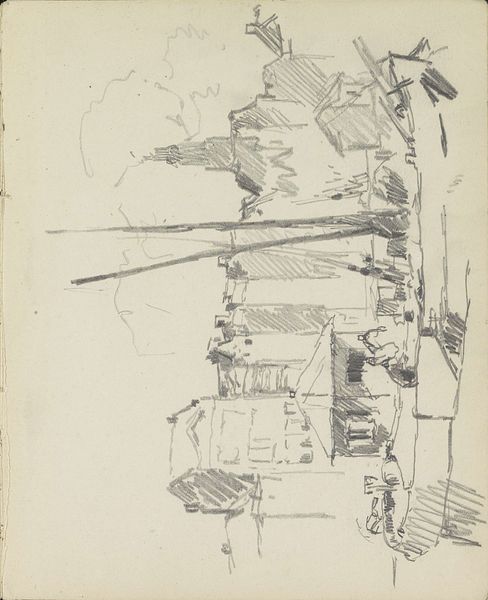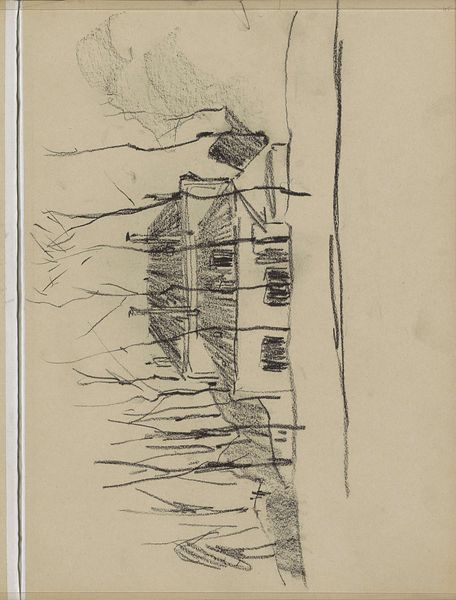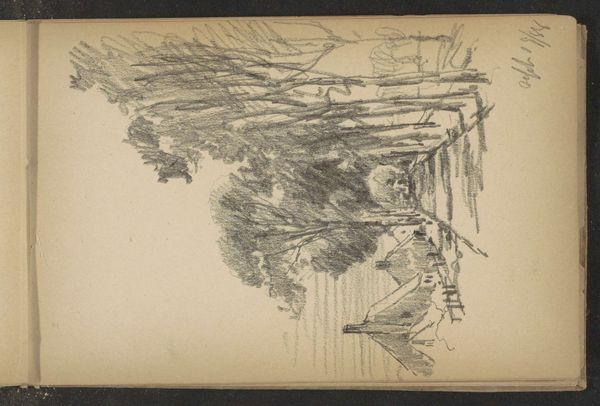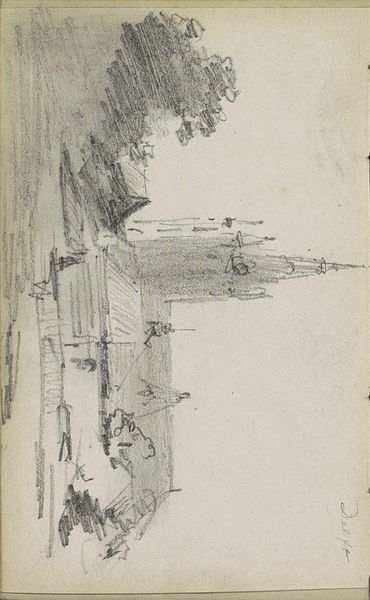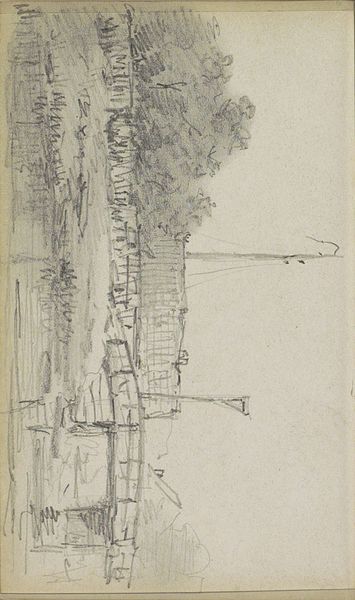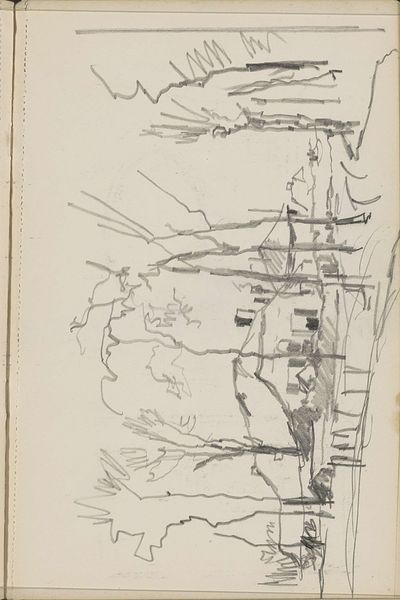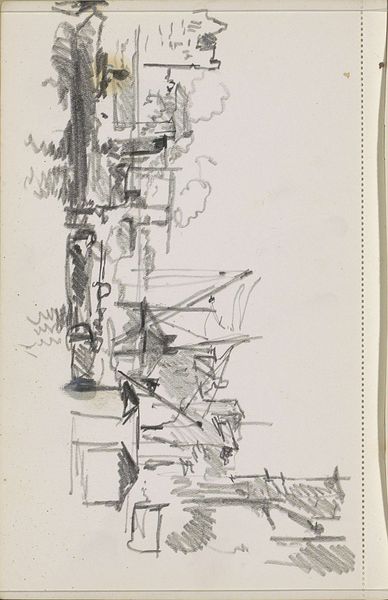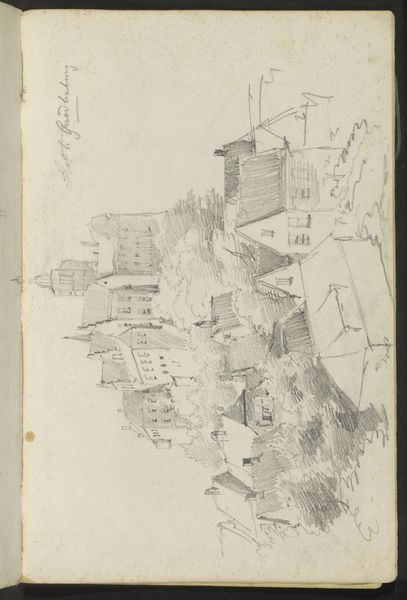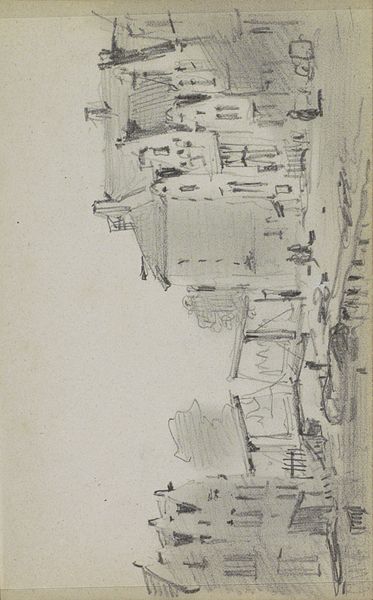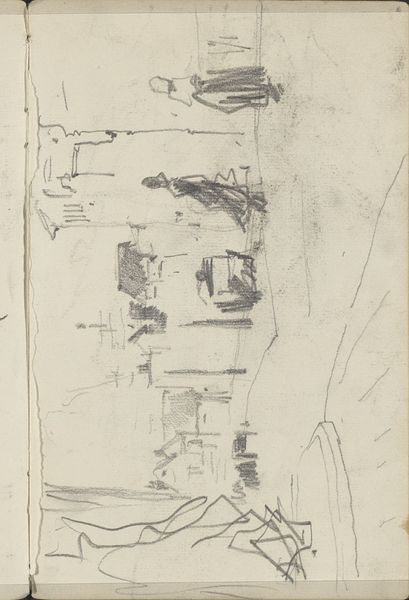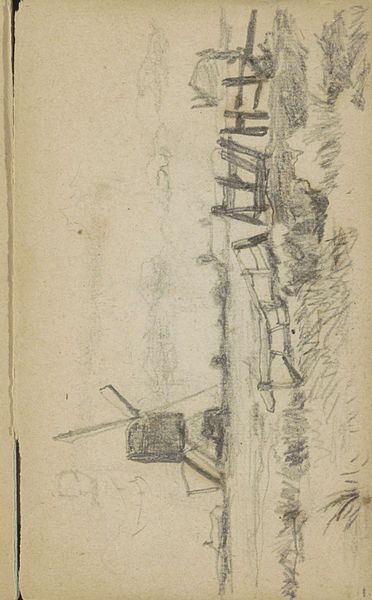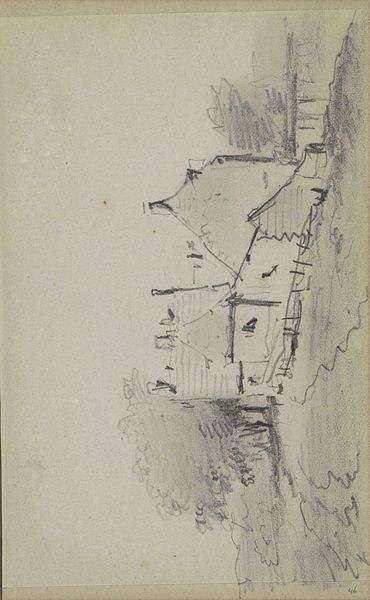
drawing, pencil
#
drawing
#
landscape
#
pencil
#
realism
Copyright: Rijks Museum: Open Domain
Editor: So, here we have Alexander Shilling's pencil drawing, "Gezicht op een kade te Den Haag," created around 1888-1889. It feels almost dreamlike with its hazy lines and sketchy details. What do you see in this work? Curator: The drawing's suggestive rather than explicit nature makes me ponder the weight of memory here. Look at how the trees are rendered—dense masses almost obscuring the buildings behind. What does that obscuration signify, culturally? Perhaps the unreliability of memory. How clear are our memories of childhood, really? Shilling presents The Hague in a soft, filtered way. Notice the detail present in the architectural structures juxtaposed with the relative formlessness of the vegetation, any thoughts on how this impacts meaning? Editor: Well, the building seems more 'real', in a sense... solid. Perhaps he's contrasting the permanence of the city with the ever-changing, transient quality of nature? Curator: Precisely. It could symbolize society's ambition for enduring works against the organic cycles of nature. Even more intriguing to me are the empty spaces. It suggests perhaps both melancholy but equally the possibility for memory to settle in, to make place, in this part of the town. Editor: That’s an interesting way to read it, considering it was made so long ago. Now I see that the empty space doesn't feel empty, but like a pause for reflection. Curator: Indeed, that pause for reflection. Perhaps the key symbolic act offered within this pencil drawing. Editor: This was an interesting look into this pencil drawing! I really appreciate your cultural insight.
Comments
No comments
Be the first to comment and join the conversation on the ultimate creative platform.
